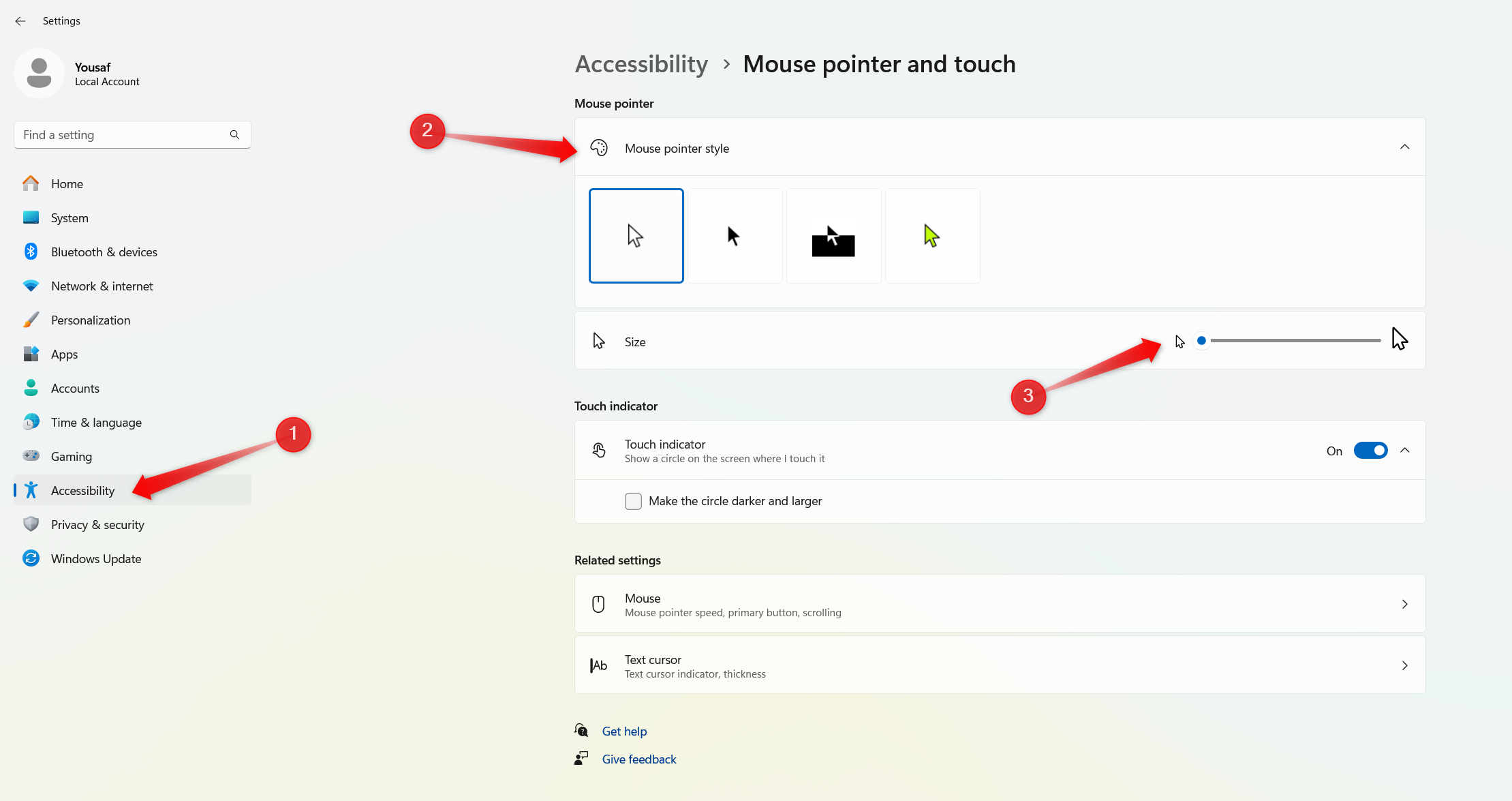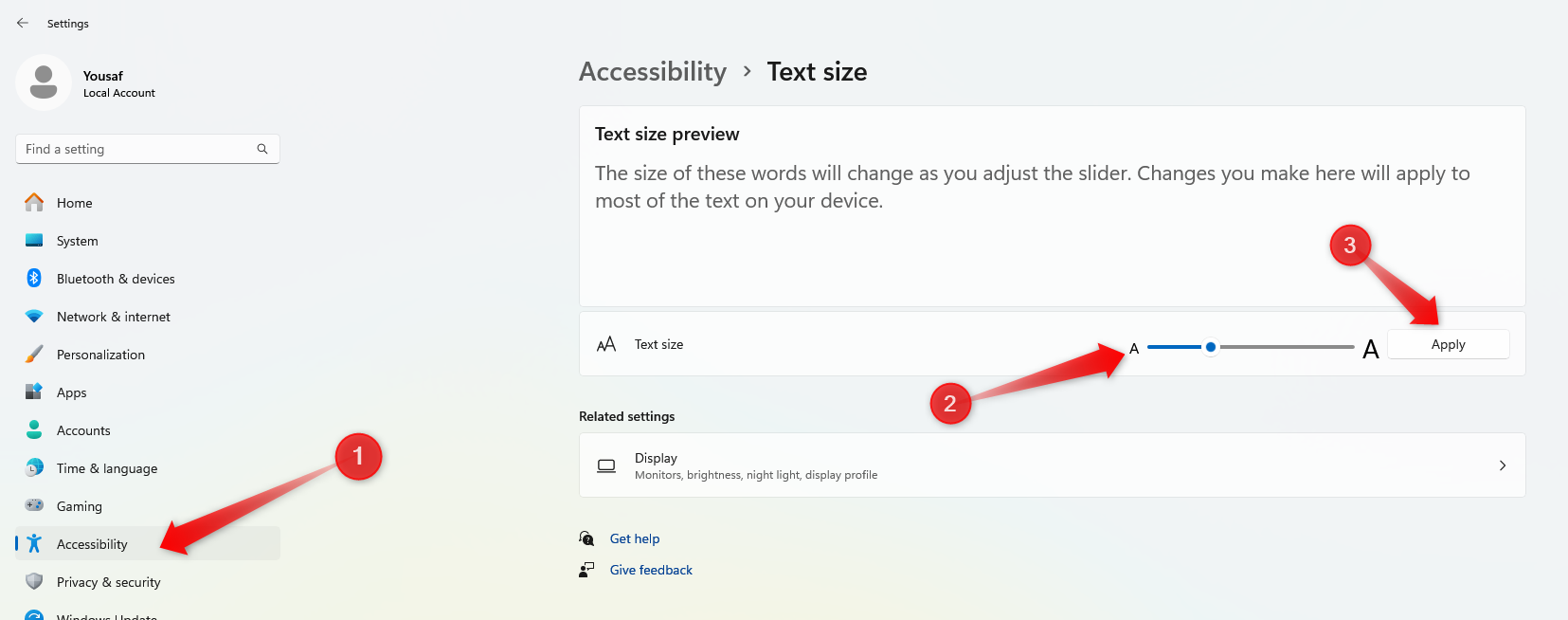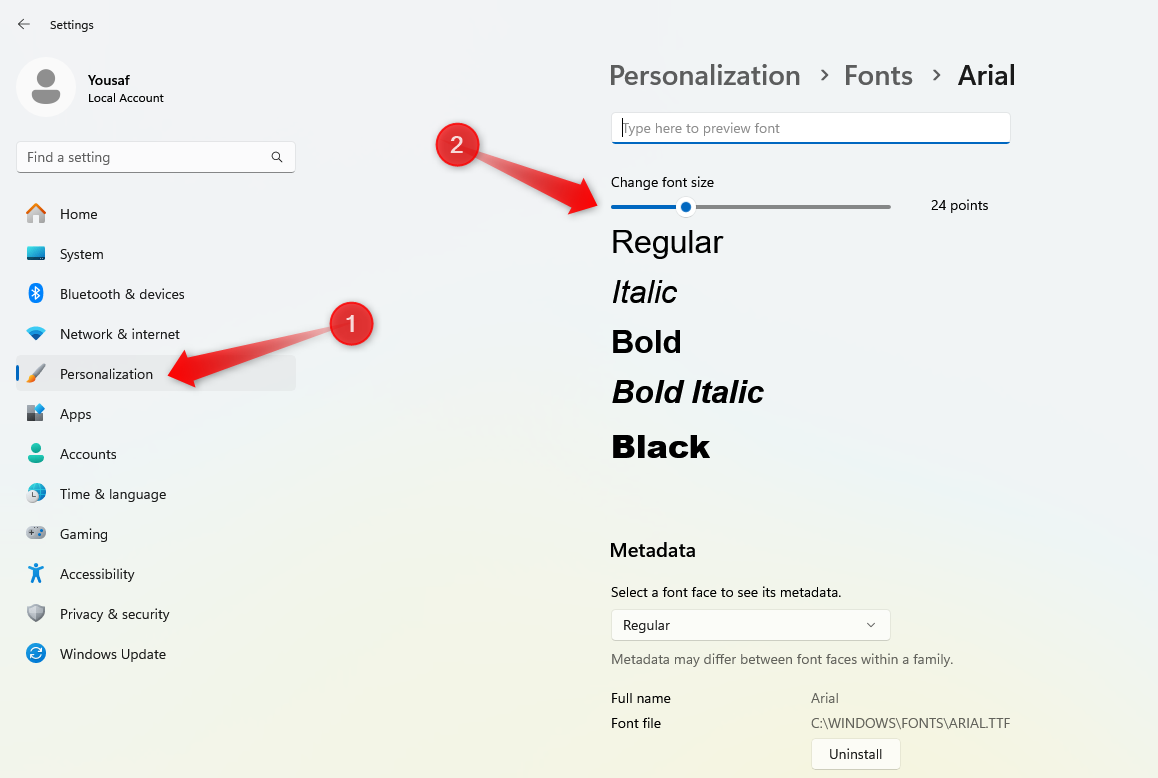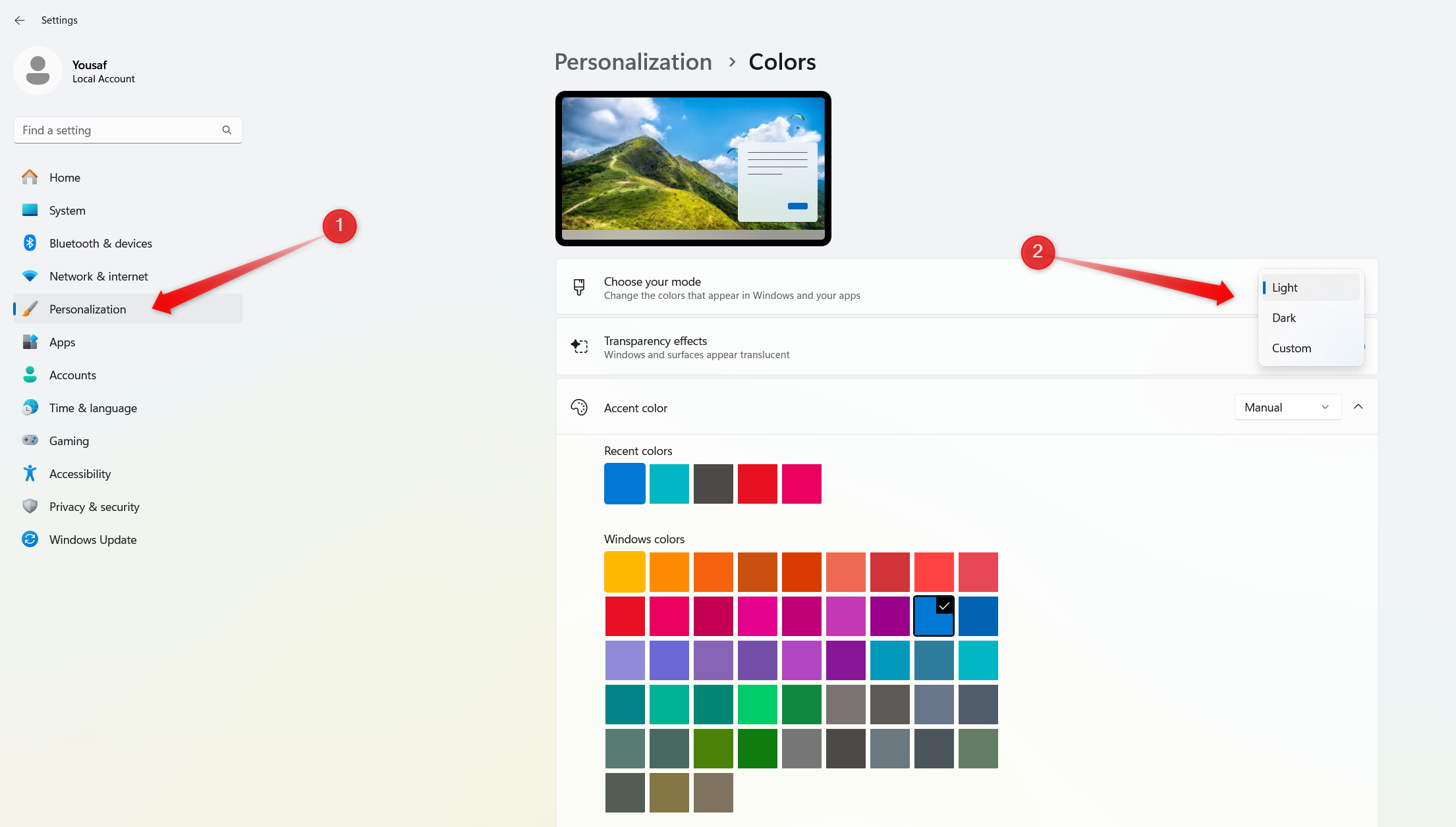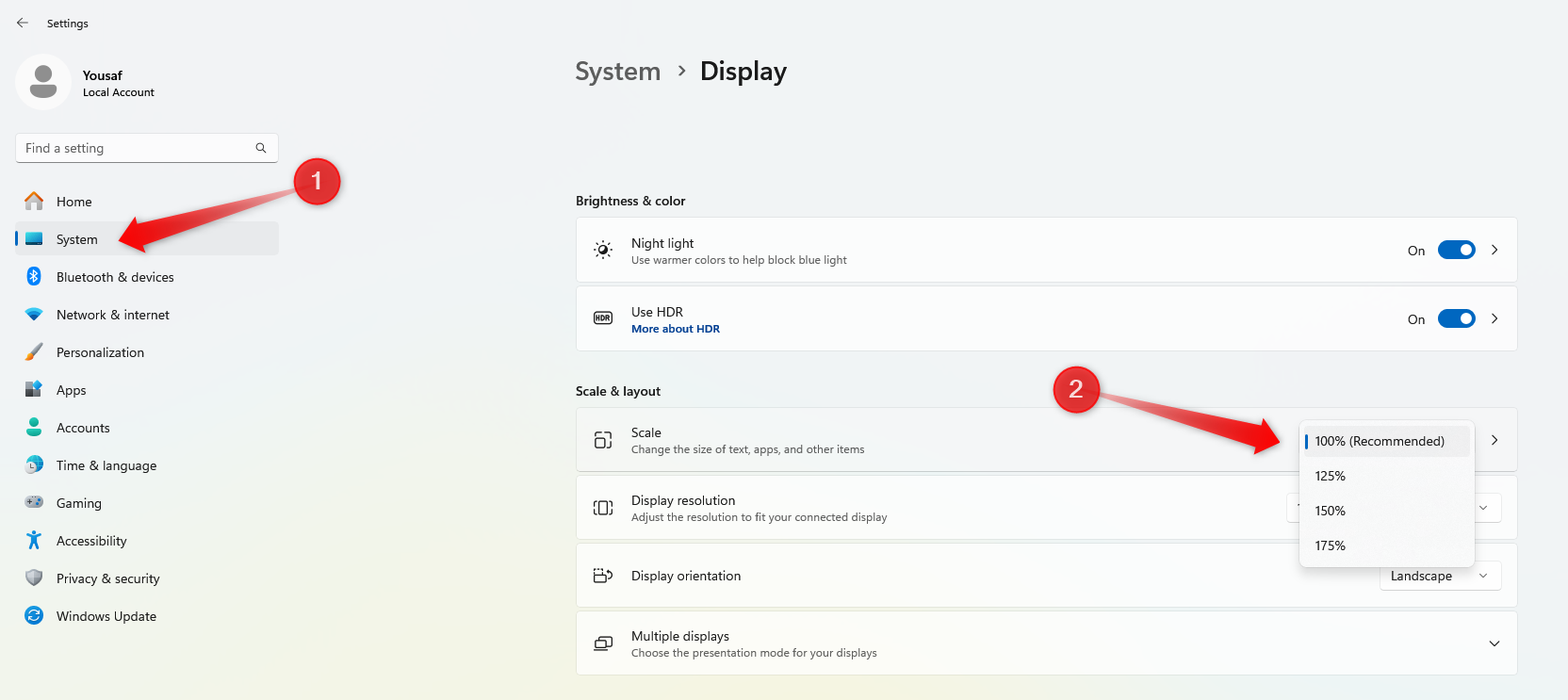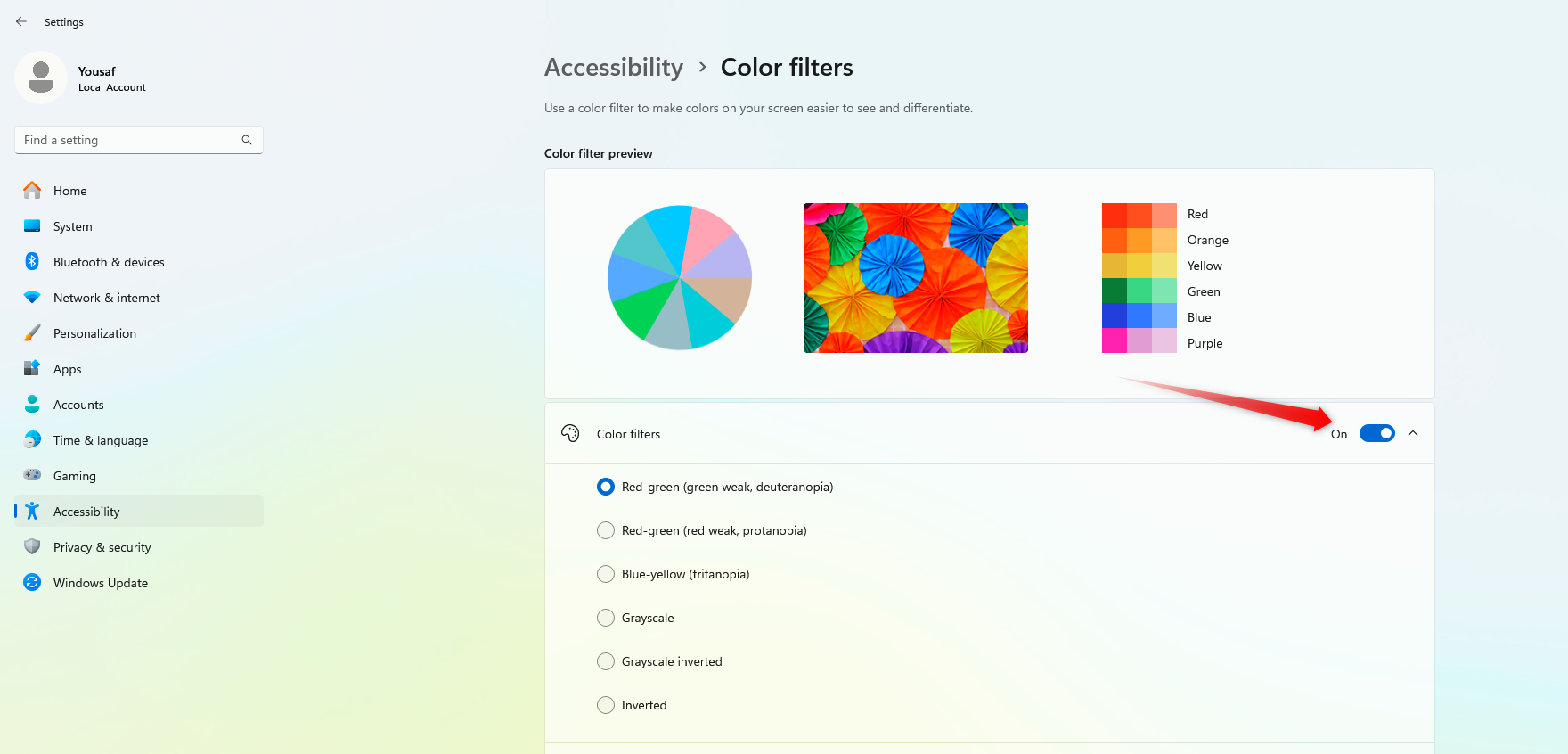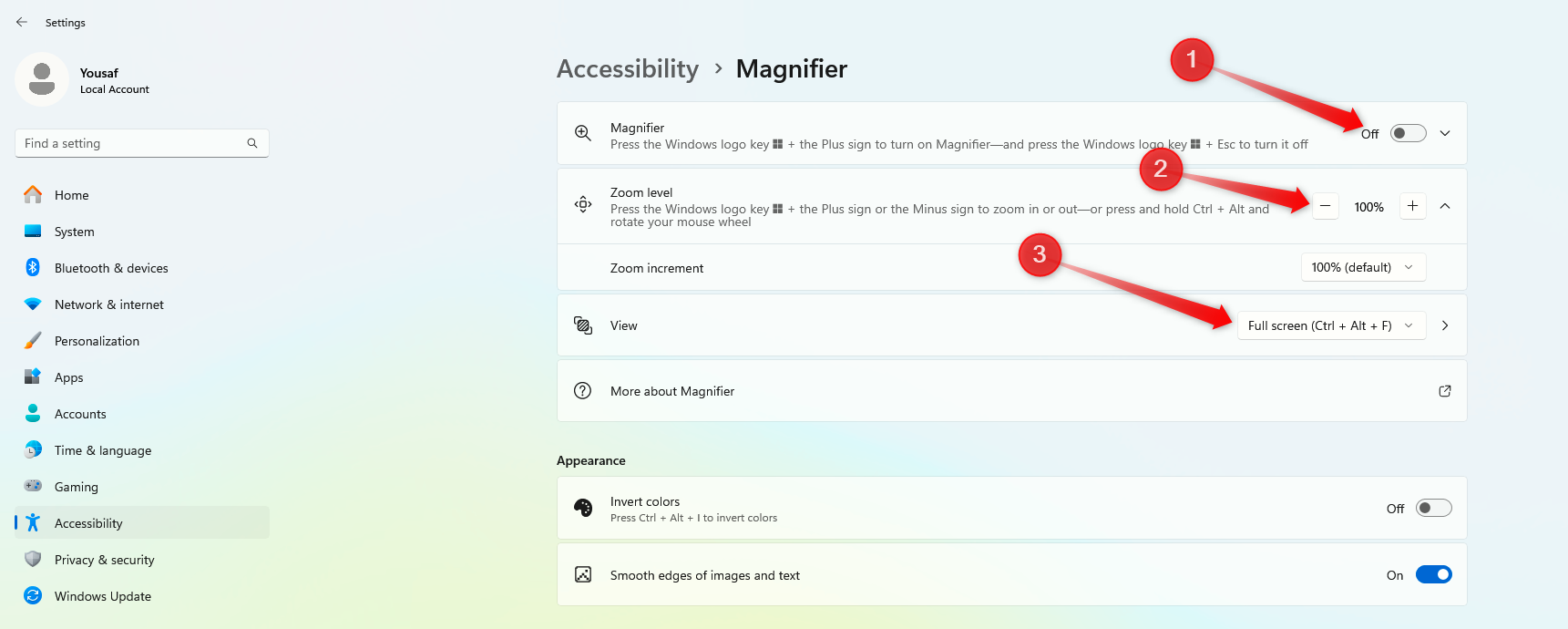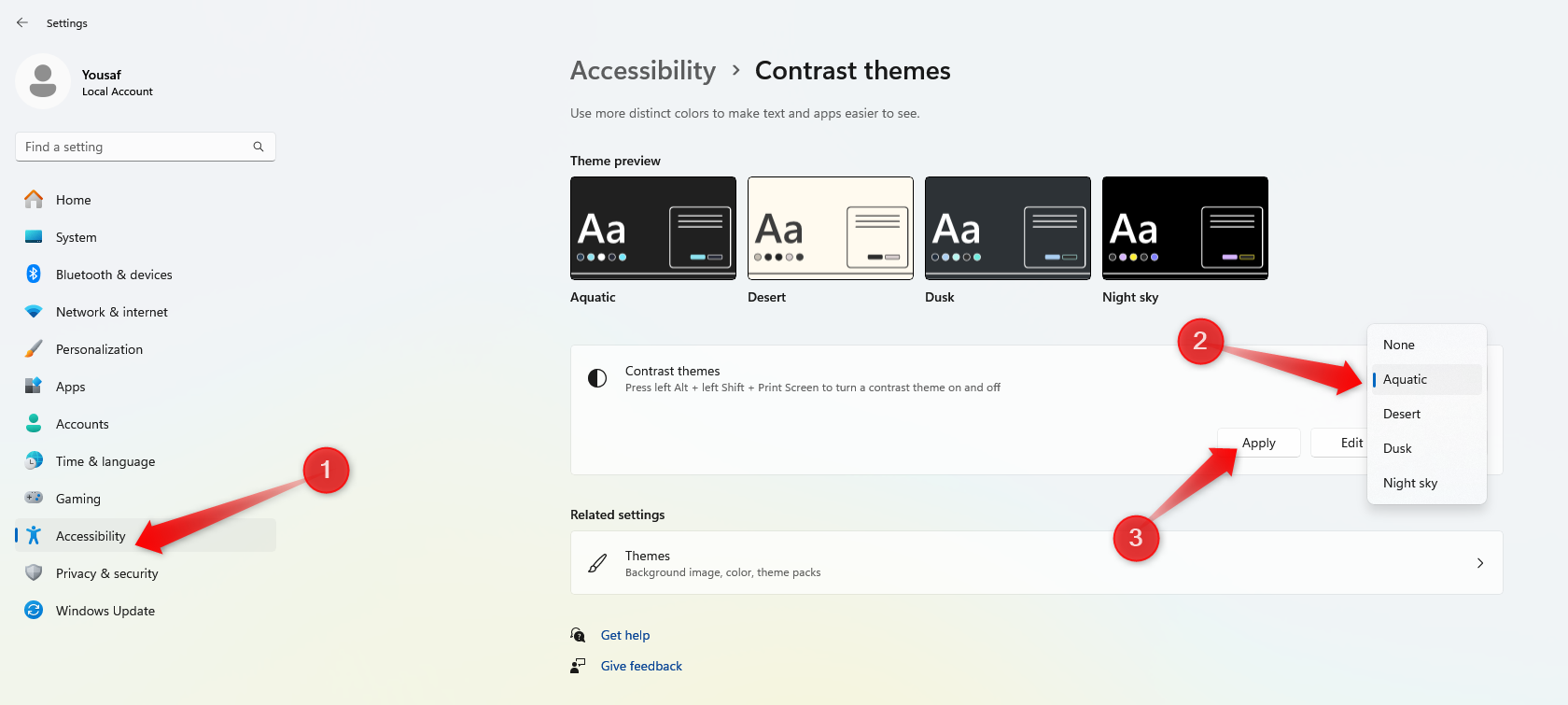Many of us neglect our eye health, often spending long hours in front of a Windows PC that isn’t set up for comfortable viewing. Consider adjusting some settings to make Windows more accomodating to your eyes.
1
Customize the Size and Color of Your Mouse Cursor
Our eyes constantly track the mouse cursor across the screen. If it’s too small or hard to see, this can strain our eyes by requiring extra effort to find it. This is especially taxing when working on bright or large screens for extended periods. To reduce eye strain, consider adjusting the cursor’s size and color.
Right-click the Start button and select “Settings.” Then, select the “Accessibility” tab on the left and click “Mouse Pointer & Touch.” Use the slider to adjust the cursor size and select a more visible or intuitive pointer style to improve eye comfort during prolonged use. Don’t over-stylize or enlarge the pointer excessively, as this could negatively affect your experience.
2
Adjust the Text Size and Font
If the text in title bars, menus, or icons appears too small or is displayed in a font that’s difficult to read, it can quickly lead to eye strain. To make Windows easier on your eyes, consider adjusting the text size and font. However, avoid making the text excessively large and use fonts like Arial or Calibri for better readability.
To adjust the text size, open the Settings app and go to Accessibility > Text Size. Move the slider to the right to increase the text size and click “Apply.”
To change the font, open the Settings app and navigate to Personalization > Fonts. Choose a preferred font and adjust its size using the slider provided.
3
Toggle Between Dark and Light Modes
The mode you use on your laptop—light or dark—can also impact your eye comfort. Using light mode in dimly lit environments or dark mode in bright surroundings can strain your eyes. To minimize eye fatigue, you must regularly switch between light and dark modes based on your lighting conditions.
To change modes, open the Settings app and go to Personalization > Colors. Use the dropdown menu to select Light or Dark mode. If you prefer different modes for apps and the system, choose “Custom” and set your preferences for each. For added convenience, you can also schedule automatic mode switching based on the time of day.
4
Modify Your Screen’s Scaling Settings
Windows automatically scales your display to match the screen resolution, but the default settings may not suit everyone. If you find the text, icons, and other elements too small and don’t want to adjust their size individually, you can change the screen scaling. This enlarges on-screen elements, making them easier to read without straining your eyes.
The default scaling usually feels small for smaller screens. Increasing the scaling percentage can make everything more comfortable to view. To adjust this, right-click the Start button and open Settings. Then, navigate to System > Display. Expand the dropdown next to Scale and experiment with different scaling percentages to find the one that suits you best.
5
Activate the Night Light Feature
Computer screens emit blue light, which can feel uncomfortable, especially in low-light environments. While the negative effects of blue light are often overblown, it is harsher than other light colors. To counter this, Windows includes a Night Light feature that reduces blue light by adding a warm tint to your display. Keeping it enabled during nighttime hours is a good idea.
To enable Night Light, open Settings and navigate to System > Display. Turn on the toggle next to “Night Light” and customize its intensity or set it to activate automatically during evening hours. While the screen’s appearance may be less appealing with this feature enabled, it reduces the harshness of your screen’s light, making it a worthwhile adjustment.
6
Use Color Filters to Suit Your Preferences
If you have visual impairments or color blindness and find it difficult to distinguish certain colors, Windows’ color filters can be a game-changer. They adjust the color palette on your screen, making it easier to navigate and interact with. Even if you don’t have specific issues, experimenting with these filters might improve your overall visual experience.
To enable and use color filters, open the Settings app, navigate to Accessibility > Color Filters, and toggle on the “Color Filters” option. If you have a specific type of color blindness, such as red-green or blue-yellow, you can select a filter tailored to your needs. Other filters, like grayscale or inverted colors, are also available—try them all to find the most comfortable one.
7
Set Up a Screen Magnifier
Not all on-screen visuals are created equal. While some elements are relatively easy to see, others can be too small or difficult to focus on, which can cause unnecessary strain on your eyes. Windows’ built-in Magnifier tool offers a handy solution: It allows you to zoom in on specific areas of the screen for better visibility.
To enable the Magnifier, open the Settings app, navigate to Accessibility > Magnifier, and toggle it on. You can adjust the zoom level to suit your preferences and choose between full-screen, docked, or lens modes. For quick access, use the keyboard shortcuts: Windows + Plus (+) to zoom in and Windows + Minus (-) to zoom out.
8
Use High Contrast Themes
High Contrast improves screen readability by increasing the contrast between text, backgrounds, and interface elements. This feature reduces eye strain and makes navigating Windows much easier, especially for individuals with low vision, color blindness, or photosensitivity. It can also be useful when working in dimly lit environments.
To enable the High Contrast theme in Windows 11, open the Settings app and navigate to Accessibility > Contrast Themes. Select your desired theme from the drop-down menu and click “Apply.” You can also quickly toggle the theme on or off by pressing a shortcut: Left Alt+Left Shift+Print Screen.
Making Windows easier on your eyes is simple, yet many overlook it, which can worsen their eye health. These small adjustments not only reduce strain but also improve focus and productivity. Along with these tweaks, remember to follow the 20-20-20 rule, work in well-lit environments, and learn what blue light-filtering glasses can and can’t do.


